by Matt | Oct 13, 2014 | Uncategorized
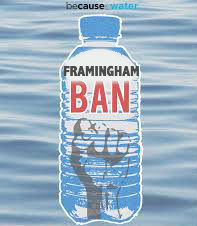 While most high school seniors are currently focusing on filling out college applications and getting their last sports seasons in before graduation, Framingham student Matt D’Amico is fitting a much larger fight into his busy schedule: banning bottled water.
While most high school seniors are currently focusing on filling out college applications and getting their last sports seasons in before graduation, Framingham student Matt D’Amico is fitting a much larger fight into his busy schedule: banning bottled water.
“Seeing what we put into our bodies and how it’s affecting us has always been very interesting for me,” D’Amico said in an interview on Thursday. He felt it was his duty to find a solution, any solution, to see less people suffer from ill health caused by a lack of environmental safety.
“[Eradicating bottled water] was one thing that we could do that wouldn’t really hurt business or consumers so much. It’s really a redundancy that we have considering tap water exists. It’s one of the easiest things to start with”, D’Amico explained.
The Proper Fight
With the negative health effects of ingesting PET (polyethylene terephthalate), the chemical used to make single-serving, single-use plastic water bottles, combined with the immense pollution caused by these bottles, this felt like the proper fight for D’Amico to take on. “The two biggest issues for me are climate change and environmental safety. These bottles simply use up a lot of our natural resources — water, oil — but also destroy the environment in the process.”
D’Amico breaks down the argument against bottled water into three main sections: environmental, health and economic. From an environmental standpoint, he said, the amount of natural resources used in making single-use plastic bottles is astounding. Filling our landfills, rivers and forests with these bottles is causing an environmental safety hazard, one that not only harms the natural world itself, but the humans that reside within it. The negative health effects of PET offer a strong argument on the health side, while the insane economic cost of purchasing these bottles for mere convenience (instead of using free tap water) is also powerful.
The Right Audience
Once D’Amico has a chance to explain his reasoning, most Framingham residents he has spoken with are easily on board with the bottled water ban. “After hearing the arguments,” D’Amico says, “most people agree with it. It’s just getting the word out there and speaking directly to those committee members that will make a difference.”
If successful, the bottled water ban would go into effect in January of 2016, giving businesses plenty of time to rid their shelves of bottled H2O. Luckily, Framingham has a fairly strong water infrastructure to adapt to these changes. Public fountains are fairly abundant in the town. This will also provide the town incentive to invest in more Water Bottle Filling Stations.
The Next Steps
In order to pass the bill, the next few weeks will be packed with meetings, solid debates and a plethora of persuasive emails for the high school senior and his small team. The deciding town meeting vote will occur on October 21st. A simple majority is needed to pass the bill and would make Framingham the second town in Massachusetts to pass a bottled water ban. Concord, MA passed a similar bill in April of 2012.
“I think there’s a good chance this is going to happen,” D’Amico optimistically stated.
Matt mentioned that anyone looking to get involved can email him at framinghamgreeninitiative@gmail.com.
Vote for Matt’s cause to install bottle filling stations in Framingham HERE.
by Matt | May 5, 2014 | Uncategorized
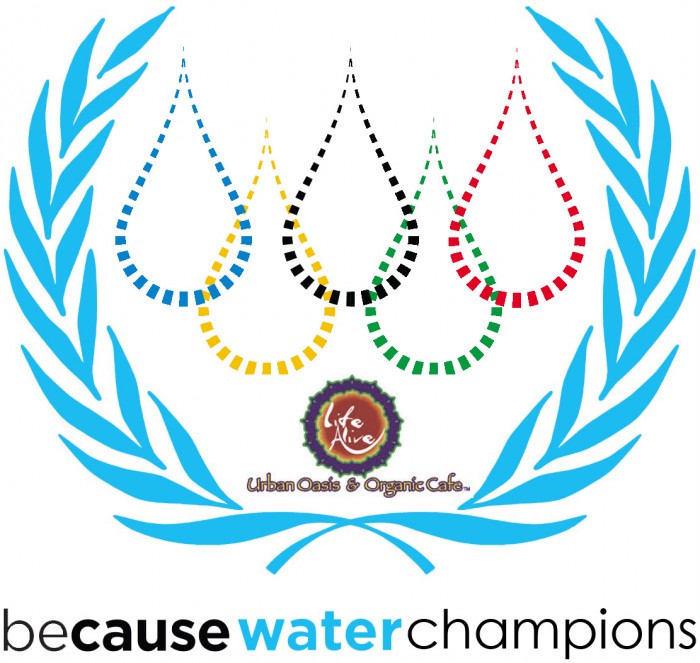
Life Alive meals breathe meaning into healthy habits for natural-food junkies in Massachusetts. With locations in Cambridge, Lowell, and Salem, the demand for high-quality and great tasting food is met with an earth-conscious awareness in every order.
In summer 2013, Life Alive became one of the first business partners in BeCause Water’s “Drop In” program – a shared resource network of drinking water supported by a mobile app that allows users to find, drink, and share water.
Not only did Life Alive agree to make their drinking water accessible to the public, they became the first Drop In partner to completely end the sales of bottled water. We at BeCause Water admire Life Alive’s leadership in the sustainability community and recognize them as this month’s “Water Champion.”
We spoke with Laura Aldorisio, from the Cambridge location, about Life Alive’s commitment to water sustainability. In her answers, Laura shared how Life Alive’s partnership with BeCause Water is supporting the mission of the store for complete health and body vitality.

1) Why is water valuable to Life Alive? Does water affect the quality of your food or beverages?
The quality and purity of our water is extremely important to us at Life Alive.
Drinking clean, purified water is as essential to one’s overall health and vitality as eating organic vegetables. Our bodies are mostly made up of water. In order to maintain complete health, our bodies need proper lubrication and rehydration to flush toxins, keeping our organs, blood, and lymphatic system clean and cleansed. Clean, alkaline water also influences the body’s entire pathways, from proper enzyme production, to digestion, to brain function. Without water, our bodies build up waste and simply break down. Offering free, ph balanced, supremely filtered water that is free of environmental toxins and acidity is of high importance to us.
Clean and alkalized water absolutely affects and enhances our entire menu at Life Alive. From how we cook our organic grains, handcraft our organic almond milk and sauces, to our drink menu, abiding by our high standards of quality water is one of the secrets to our delicious food. One truly counts on the other.

2) Why did Life Alive feel it was important to stop selling bottled water?
One of the largest environmental hazards our world is facing is the pollution of plastic. The bottled water industry is one of the most powerful culprits contributing to plastic pollution, which severely impacts our oceans, soil, and atmosphere. As it is Life Alive’s mission to always engage and invest in practices that help nurture and revitalize our Mother Earth, we could no longer support its sales.
3) What has the in store aftermath been like since you stopped the sale of bottled water? Is Life still Alive? 😉
The Aftermath has been completely positive. Guests have been genuinely pleased and intrigued by our ongoingcommitments to increase our sustainability and evaluate ways we can be even more ecologically friendly. Instead of selling plastic bottled water, our Salem and Lowell locations have began selling glass Ball Jars along with Cuppow lids so our guests can easily utilize Life Alive as a “Drop” location with their own reusable jar.
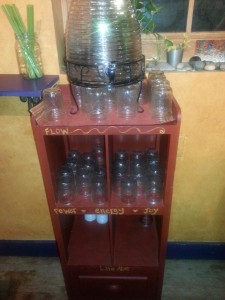
4) Do you believe it is necessary for other businesses to take initiative in water sustainability?
Absolutely. Water sustainability is a huge issue that is affecting our world and environment that is not to be overlooked or underestimated. Water is our most vital resource and source of energy. Businesses and especially restaurants have a responsibility to be aware and investigate methods of how they can conserve water and enhance all practices to be more sustainable and environmentally sound. Our team members are trained to be mindful of water conservation and sustainable actions.
5) Have you had to explain to customers why you no longer sell bottled water? If so, What did you say?
We explained to our guests that Life Alive’s practices are always committed to promoting sustainability, reducing waste, and finding solutions that will encourage greater ecological health. By our guests joining us and engaging in this simple and conscious act, we can collectively be generous contributors to environmental healing, preserve our resources, and minimize our carbon footprint. We also posted flyers on our walls and on social media explaining the hazardous environmental facts of bottled water (thanks to our friends and partners at BeCause Water.)

6) How does Life Alive stay true to the health and vitality of bodies, communities and earth, as stated in your mission, with your new commitment to water sustainability?
At Life Alive, our mission is for our actions and practices to set an example for how anyone, from individuals to businesses, can make conscious choices and changes that can positively impact and create a healthier world. Through awareness, our goal is to enlighten, educate, and inspire how we can collectively make a difference in protecting and regenerating the earth and by doing so, the vitality of our bodies. Water is our life force. It should be our instinct to preserve and safeguard it.
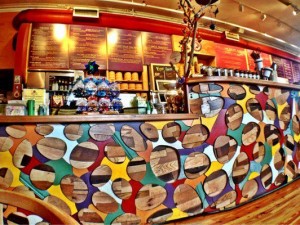
Article by Tiffany Wilson
by Matt | Feb 15, 2014 | Uncategorized
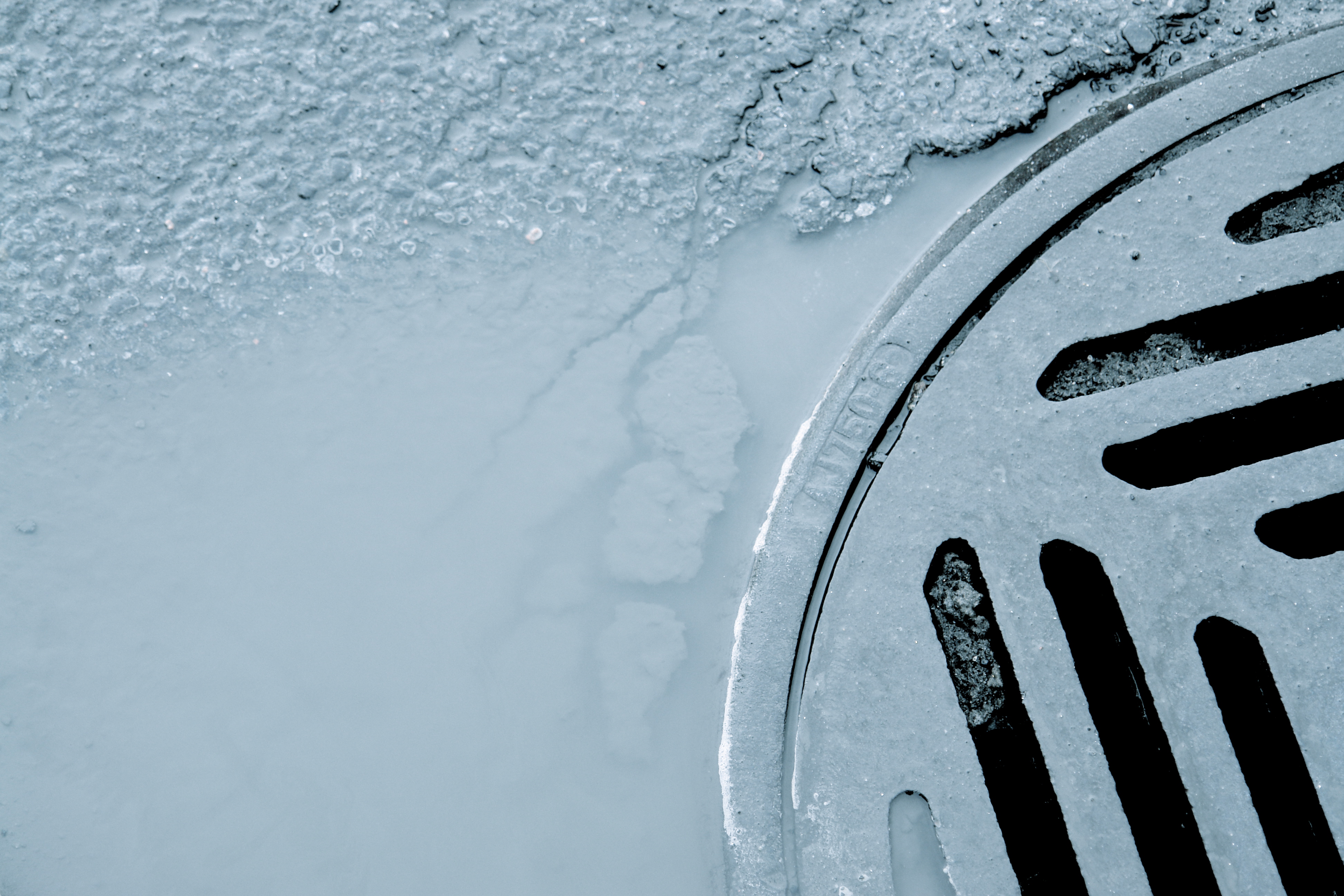
By Conventina
I just posted a photo on Facebook of myself when I was about 4 years old. I was all wrapped up in my snow suit with shovel in hand. Things haven’t changed much. We are used to this by now—it’s winter in New England. It’s cold. The storms keep coming. We plow the driveway. We shovel the walkway and when it’s icy we salt it and chip away. Then we go inside, pour some tea and sit in front of the fireplace. There is a certain calm, beauty and solace to this routine.
But wait! Now I can’t use salt to melt the ice? Recently I read that over 20 million tons of salt are used to clear U.S roads each winter. That’s a lot of salt. It dissolves in water so it ends up as runoff in our streams and rivers or ends up in the groundwater or it ends up stored in soils.
Chris Swan, assistant professor in the Environmental Sciences department at the University of Maryland says that we’re starting to see a rise in the average and peak salt concentrations in our drinking water. One recent National Academy of Sciences study shows that salt concentration in fresh water is on the rise in Maryland, New Hampshire and New York due to road salting and could make groundwater in many areas of the Northeast un-drinkable within a century.
Swan says frogs exposed to salt feed much more intensely during development, and this could make them easy prey in the wild, although it’s too soon to tell what this might mean for survival rates, or breeding. Amphibians are indicator species for freshwater ecosystems, but Swan says you’ve got to look to the smaller members of the aquatic food chain to get the big picture.
Sadly, there’s another issue…zooplankton. These are tiny invertebrates that swim around the water feeding on algae. If salt kills zooplankton, it does not just make the water green and scummy; it could also mean that larger predators, like many species of fish that feed on zooplankton go hungry. Talk about effecting the ecosystem, this is scary!
It is a dilemma because snow removal is a critical part of the public safety issue. Over 115,000 accidents happened under winter driving conditions in 2006. But a growing number of scientists, like Christ Swan, are calling for smarter salting techniques because the effects of adding over 20 million tons of salt to the environment each winter is devastating.
Salt is still the cheapest and most readily available de-icer, but some cities and towns have found alternatives. Akron, Ohio uses beet juice as a de-icer, and some towns in Connecticut and New York add high fructose corn syrup and molasses to their salt. This keeps roads safer for both the motorists and the frogs.
I ‘m not quite ready to raid my pantry for beets and molasses and corn syrup, but I am willing to change my routine a bit. I’ll shovel and chop and wait for the sun to melt the ice. I’ll tread more carefully in the name of the frogs and the fish and the tiny zooplankton. It’s almost spring.
by Matt | Feb 9, 2014 | Uncategorized
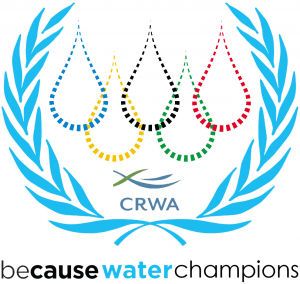
The 2014 Winter Olympics in Sochi are officially underway, bringing recognition and respect to the top performing athletes in the world.
Olympic athletes are a breed of their own. Some are the fastest, others the strongest, but every olympian must possess the utmost dedication to his or her respective sport.
BeCause Water is shining light on the winter olympics to catapult an ongoing ceremony of our own. The BeCause Water Champions series recognizes the top performing water researchers, scientists, activists, entrepreneurs, and other water aficionados dedicated to the betterment of the most essential resource to mankind.
 We are commencing our first official spotlight with a well known non-profit out of Weston, Massachusetts. A waterway once perceived as foul and toxic, one that local 1960s rock band The Standells tagged as “Dirty Water”, is now rated as one of the top urban waterways in the United States. This standing was tested over the summer with a public swimming event held in the Charles River – the first of its kind in 50 years.
We are commencing our first official spotlight with a well known non-profit out of Weston, Massachusetts. A waterway once perceived as foul and toxic, one that local 1960s rock band The Standells tagged as “Dirty Water”, is now rated as one of the top urban waterways in the United States. This standing was tested over the summer with a public swimming event held in the Charles River – the first of its kind in 50 years.
The remarkable improvements seen in the Charles River are largely due to the efforts of one of the country’s oldest watershed organizations. The first recognition in BeCause Water’s Champion series pays respect to the Charles River Watershed Association.


* Photo Credit: Charles River Watershed Association
Ever since their formation in 1965, the mission of the Charles River Watershed Association (CRWA) has focused on improving the Charles River, from advocacy of its parkland expansion to fostering partnerships across state and private entities to promote sustainable practices.
As the CRWA’s work is science-based and informed, a large part of what they do involves monitoring and analyzing the data collected on the watershed through their Field Science Program. Water quality tests are regularly conducted, along with streamflows, and monitoring of fish and invertebrates. CRWA is then able to utilize their data to make decisions in the event of overflows and other similar situations. Staff scientists conduct much of the work and advising, but what you might not know is that you can also help out! The CRWA relies as much on local residents, “citizen scientists,” as their staff to collect data and educate.
We had the privilege of exchanging questions and answers with Senior Scientist Julie Wood:

What would you like to see changed in the way the public perceives water?
“I’d just like the public to be more aware of fresh water as a finite valuable resource, its importance, how our actions affect the water supply, and how we can use it more efficiently. In a place as urbanized and water rich as eastern Massachusetts, we should all be aware of the valuable resource we have readily available to us. The Boston area gets over 40 inches of rain every year. Under natural conditions most of that rain water would seep into the ground, where it would be cleaned and stored as groundwater. But Boston’s infrastructure tends to work against the region’s natural hydrology: stormwater hits the pavement, where it picks up pollutants before flowing into the Charles. This pollutes the river and depletes the watershed’s supply of groundwater. At the same time, I want people to know that their actions can also improve the health of local waterways by implementing or advocating for sustainable policies, like low impact development systems, which strives to construct built infrastructure that works with the region’s natural hydrology and helps restore the groundwater supply.”
What is the biggest challenge that CRWA and similar watersheds are facing in advocating for and protecting watersheds?
“There’s really no one answer to this, two major challenges we run into are the incongruity of political boundaries and natural boundaries and facing a vast, complex problem with the limited resources we often have to work with. The Charles River’s watershed is an area of 308 square miles and includes 35 separate municipalities, each with their own sets of regulations and priorities.
 At CRWA, we take a watershed view, looking at the natural system and what is best for the river overall. This means interfacing with many different municipalities, agencies and parties, working to bring everyone together to do what is best for the river, not just what is in their immediate interest.
At CRWA, we take a watershed view, looking at the natural system and what is best for the river overall. This means interfacing with many different municipalities, agencies and parties, working to bring everyone together to do what is best for the river, not just what is in their immediate interest.
Additionally, we’re a small organization, so engaging with many separate town governments and interest groups can be a difficult balancing act. On top of that, watershed protection suffers when government organizations at all levels: federal, state, and local, cut back their budgets.”
What has been the greatest “victory” the CRWA achieved so far in its history?
“In the late 1960’s, CRWA and local activists resisted the Army Corps of Engineers’ flood control proposal to build dams and dykes, and to channelize the river. Instead, the Corps purchased nearly 13 square miles of wetlands as flood storage. Known as the Natural Valley Storage Area, the value of these protected wetlands is manifest as the occurrence of 100 year storms increases. They also provide water quality benefits, protect wildlife habitat, and offer recreational opportunities for communities.
Additionally, fish populations in the Charles have been stressed by poor water quality, dams, warm temperatures, and low summertime flow; and many species have disappeared. However, improvements to fish ladders and fish migration, dam removal, and improved water quality have resulted in the MA Department of Fish and Game (with CRWA support) restocking the river with American Shad. To date, 23 million shad larvae have been released to the Charles River, and beginning in 2011, adult shad were observed returning to the river to spawn!
We are also very happy with how far the river has come in improved water quality. This summer saw the first public swim in the Lower Charles River Basin since the 1950s. The river has been safe for boating for a number of years now, but the fact that the river is now clean enough for swimming tells us that our work has made an impact on the Charles and helped the people of Boston and surrounding communities.”
You mentioned that the CRWA is shifting its focus from boating to swimming now—what changes, if any, will there be to meet that goal?
As a result of the work of CRWA and other local agencies and organizations’ work, water quality in the Charles is safe for boating the vast majority of the time. This is reflected in the extensive use of the river for boating that is a part of the fabric of life in Boston. The next obvious step is to open the river up for more recreational uses, namely swimming. Because people come in direct contact with the water while swimming, the water quality standards for swimming are stricter than those for boating. More work is needed before the river will be safe for swimming as consistently as it is safe for swimming.
The biggest single problem we have to deal with now is stormwater runoff carrying pollution to the Charles during rain storms. Stormwater runoff can also cause combined sewer overflows, or CSOs, in the Lower Basin of the Charles River. Combined sewer pipes carry both storm water and sewage; normally, this goes to the Deer Island Treatment Plant, but during heavy rainstorms, more water flows into the sewers than Deer Island can handle, and this contaminated water flows out of the sewers and into the river.
We’re working to combat stormwater runoff pollution and CSOs, by working to restore the region’s natural hydrology, reducing runoff and encouraging infiltration. We do this primarily through the use of low impact development stormwater treatment systems and “green” buildings/infrastructure,
We already have a flagging system along the Charles that tells people whether or not the river is suitable for boating, and we would implement a similar system that would inform people about swimming quality in advance of any beach opening.
Is there any way the public can help in facilitating this process?
 Definitely! One of the biggest ways people can help is by making any of these issues: swimming, low impact development, or just general river preservation, known to people. A lot of our work is done through municipalities, and if you let your local government know that you and your neighbors care about the Charles and its watershed, they’re much more likely to take action on the issues affecting it. On a more personal level, simply being aware of how connected the Charles is to the land and people can be a great help. Human activity, from big construction projects to personal water usage and landscaping; all have an effect on the natural environment. In a place that almost a million call home, this may not seem like much, but every little bit adds up into something truly powerful.
Definitely! One of the biggest ways people can help is by making any of these issues: swimming, low impact development, or just general river preservation, known to people. A lot of our work is done through municipalities, and if you let your local government know that you and your neighbors care about the Charles and its watershed, they’re much more likely to take action on the issues affecting it. On a more personal level, simply being aware of how connected the Charles is to the land and people can be a great help. Human activity, from big construction projects to personal water usage and landscaping; all have an effect on the natural environment. In a place that almost a million call home, this may not seem like much, but every little bit adds up into something truly powerful.
Is there anything else you would like to let our readers know about the CRWA?
“I just want to remind everyone that CRWA really is, and has always been, a community organization. When we started back in 1965, we were just a group of citizens who were concerned about the health of the Charles, and much of our most important work, such as water quality testing and invasive plant removal, is done by local volunteers, a network of about 4,000 people. Some volunteers work with us every month, but others just participate annually in our river cleanups or water chestnut pulls, so no matter what your schedule is, there’s always a place for you at CRWA! We’d also like people to know just how important the Charles River is to the region and its people. The river is the basis for Boston’s Charles River Reservation, a 20 mile loop of parks that gives people living in the city easy access to a natural, peaceful environment where they can take part in a wealth of outdoor activities all year round. As a final note, we’re always accepting new members and contributions of any size, so if you’re interested in getting involved with CRWA, learn more at www.charlesriver.org.”
To read more about CRWA’s accomplishments, visit www.charlesriver.org/accomplishments.html.
by Matt | Sep 16, 2012 | Uncategorized
BeCause Water Interview with Doug Bennett

We recently talked to Doug Bennett of the Southern Nevada Water Authority about water sustainability and efficiency. He has worked to maximize water efficiency in one of the driest areas in the country, and knows a great deal about public water management.
BW: What is your best definition of water efficiency?
DB: Efficiency is simply getting the greatest work out of the smallest amount of water. Our sole focus has been on pushing our community to sustain a strong economy and quality of life while using less water. So many people think conservation means sacrifice, when it often only means doing something differently.
BW: Why do you think water sustainability doesn’t receive the same mainstream attention as “green energy”?
DB: Simply put, energy is more expensive and may have more appeal from a return on investment perspective. In most communities, the electric bill far outweighs the water bill. Furthermore, more federal incentives have been targeted at electric energy than water, despite the fact that reduced water use is one of the major ways to decrease our energy footprint. Pumping water is incredibly energy intensive. If the water is heated at home, or used by a customer who must pump it in a tall building, the energy footprint grows substantially. If the water goes down a drain, even more energy is spent in wastewater treatment.
BW: What are your Top 3 recommended household water efficiency installations to save water?
DB:
- Change your landscape style – The simplest way to maintain an attractive yard without an enormous water footprint is to use water-efficient plants, low-volume drip irrigation and a smart controller that monitors weather or soil conditions to water only as much as necessary.
- Wash smarter – New high efficiency machines use about one-third as much water as old-school top-loaders. Not only will you use less water, but you’ll save up to $100 annually on electricity and hot water.
- Tell your commode to hit the road – If your home was built before 1994 and you haven’t changed the toilets, you’re probably flushing 3.5 gallons or more five times per person per day.
BW: What would you say to people with the opinion that “We are a water-rich country, there should be no urgency in becoming more water efficient?”
DB: The drought of 2012 ought to be a wake up call to anyone that takes water for granted. Most water supply systems are built upon assumptions based on historic weather records. Water scarcity can come at any time to any region as a result of a shortage of infrastructure, a lack of natural precipitation, or even a court judgement. Being water efficient makes our communities more resilient.
BW: Any big events or projects in the works that you would like to inform the BeCauseWater.com readers about?
DB: The world’s largest conference for urban water efficiency is held annually in Las Vegas. The SNWA hosts WaterSmart Innovations (WSI) on a not-for-profit basis to bring together the world’s experts on water efficiency. This year’s WSI was held this past October 3-5, but you can visit www.WaterSmartInnovations.com to stay updated on future events.
We want to thank the Southern Nevada Water Authority and Doug Bennett for sharing his expertise with us. We look forward to building a smarter and more water efficient community for years to come.
by Matt | Sep 16, 2012 | Uncategorized
Ocean Contaminants

No one likes a crowded beach, especially one that’s full of trash and bacteria. It’s extremely important to make sure your beach is safe and free of ocean contaminants. Increased rainfall coupled with steamy, humid temperatures can lead to bacteria forming in and around the beach which can cause severe illness.
Whether you’re at the beach or in your home, its important to know that your water is pure and safe: You can request a FREE home water quality analysis here, and know for sure that your water is free from contaminants. We previously talked about how to avoid bacteria on the beach, but what exactly is lurking in the water? Here is a list of the top 5 contaminants that could be lurking in ocean water.
Top Ocean Contaminants:

5. Plastic Debris – We already know that humans consume and throw out far too many plastic products. Unfortunately these products often end up in the ocean, where it takes hundreds of years for the plastics to degrade. Bits of plastic end up contaminating water and harming ocean life.
4. Boating Waste – The environmental impact of shipping is huge. Sewage from ships and discharged ballast water contains viruses and bacteria that is extremely harmful for ocean life and unsafe for human interaction. Luckily Massachusetts restricts where boats can dump their waste.
3. Cyanobacteria – Cyanobacteria or “blue green algae” can develop exponentially in certain water conditions. The algae produces cyanotoxins, which are among the most powerful natural poisons known. Exposure to cyanotoxins can lead to respiratory failure and death.
2. Sewer Runoff – Storm water and sewage runoff is how most contaminants get into ocean water. Whether it be from improper human interaction, dumping, or a problem with drainage, it is important to maintain safe ways for runoff to get to it’s destination.
1. E-Coli/Enterococci – E-Coli and enterococci are bacteria caused by human or animal fecal contamination. E-Coli and enterococci cause gastrointestinal and upper respiratory problems when found at an unsafe level. These bacteria cause the majority of beach closings.
Staying Safe
The last thing you want to think about the beach is contaminants, and the possibility of getting sick; when you’re at the beach have fun but BE SAFE. Almost all water contamination comes from improper human interaction with water sources; we need to clean up our act. This means never disturbing public water supplies, proper dumping of chemicals or waste, and keeping good beach etiquette.
Luckily, the Environmental Protection Agency and the Bureau of Environmental Health conduct regular inspections to ensure water quality at Massachusetts lakes and beaches. Recently Boston kids played in the harbor to celebrate how far the ocean cleaning efforts have come. Be sure to check if your local beach has passed inspection, and keep an eye on the weather. Let’s all stay safe during these last weeks of summer!
 While most high school seniors are currently focusing on filling out college applications and getting their last sports seasons in before graduation, Framingham student Matt D’Amico is fitting a much larger fight into his busy schedule: banning bottled water.
While most high school seniors are currently focusing on filling out college applications and getting their last sports seasons in before graduation, Framingham student Matt D’Amico is fitting a much larger fight into his busy schedule: banning bottled water.











